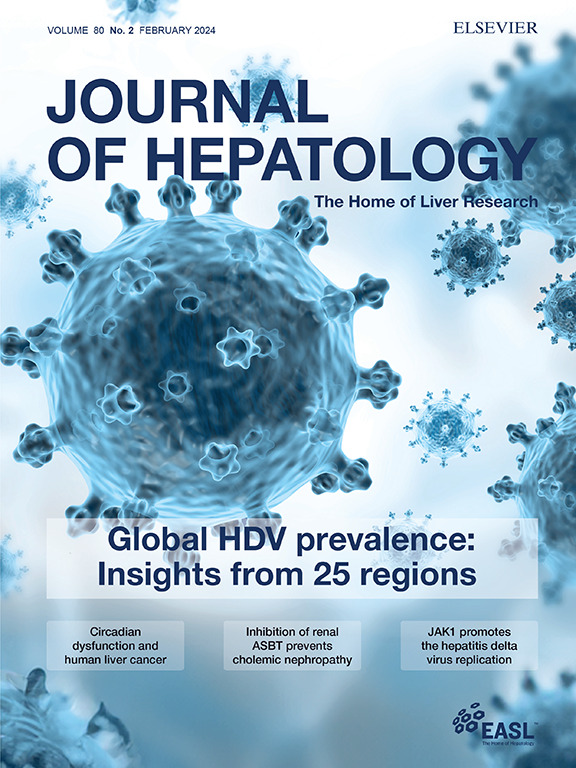Health-related quality of life in participants with advanced biliary tract cancer from the randomized phase III KEYNOTE-966 study
IF 26.8
1区 医学
Q1 GASTROENTEROLOGY & HEPATOLOGY
引用次数: 0
Abstract
Background & Aims
In the randomized, double-blind, phase 3 KEYNOTE-966 trial, pembrolizumab plus gemcitabine and cisplatin demonstrated a significant improvement in overall survival as first-line therapy for advanced biliary tract cancer (BTC). We present the prespecified health-related quality of life (HRQoL) outcomes from KEYNOTE-966.Methods
HRQoL was assessed using the European Organisation for Research and Treatment of Cancer Core Quality of Life Questionnaire (EORTC QLQ-C30), EORTC QLQ-BIL21, and EuroQoL 5 Dimensions 5 Levels (EQ-5D-5L) questionnaires. Data from the latest time point with ≥60% completion and ≥80% compliance (week 18) were compared to baseline. Least squares means (LSM) for change from baseline to week 18 were compared using a constrained longitudinal analysis model in six prespecified domains: QLQ-C30 global health status/quality of life (GHS/QoL), physical functioning, and role functioning; QLQ-BIL21 pain and jaundice scores, and EQ-5D-5L visual analog score. The analysis population was all treated participants with ≥1 completed HRQoL assessment. Between-arm difference in time to confirmed deterioration (TTD) was assessed using a stratified Cox proportional hazards model with randomization stratification factors.Results
KEYNOTE-966 randomized 1,069 participants into the study (n=533 pembrolizumab arm; n=536 placebo arm). Questionnaire compliance was >87% from baseline to week 18 in both arms. LSM changes from baseline to week 18 were similar between arms for all prespecified domains. TTD estimates were also similar between arms, including GHS/QoL (median not reached [NR] in the pembrolizumab arm versus 21.2 months in the placebo arm; HR=0.86, 95% CI=0.70-1.07); jaundice (NR versus NR; HR=1.20, 95% CI=0.94-1.54), and pain (NR versus NR; HR=0.79, 95% CI=0.59-1.05).Conclusion
HRQoL was maintained after adding pembrolizumab to gemcitabine and cisplatin, further supporting this regimen as first-line treatment for advanced BTC.Impact and Implications
Biliary tract cancer (BTC) is often diagnosed at late stages because most patients do not present with disease-specific symptoms. Compared with the general population, patients with advanced BTC report worse physical, emotional, and functional well-being. In KEYNOTE-966, adding the programmed cell death protein 1 (PD-1) inhibitor pembrolizumab to gemcitabine and cisplatin as first-line therapy for participants with advanced BTC produced a statistically significant and clinically meaningful improvement in overall survival. The prespecified patient-reported outcomes results from KEYNOTE-966 presented herein demonstrated that health-related quality of life was maintained after adding pembrolizumab to gemcitabine and cisplatin, further supporting this regimen as first-line treatment for advanced BTC.Clinical trial registration
Clinicaltrials.gov, NCT04924062

求助全文
约1分钟内获得全文
求助全文
来源期刊

Journal of Hepatology
医学-胃肠肝病学
CiteScore
46.10
自引率
4.30%
发文量
2325
审稿时长
30 days
期刊介绍:
The Journal of Hepatology is the official publication of the European Association for the Study of the Liver (EASL). It is dedicated to presenting clinical and basic research in the field of hepatology through original papers, reviews, case reports, and letters to the Editor. The Journal is published in English and may consider supplements that pass an editorial review.
 求助内容:
求助内容: 应助结果提醒方式:
应助结果提醒方式:


